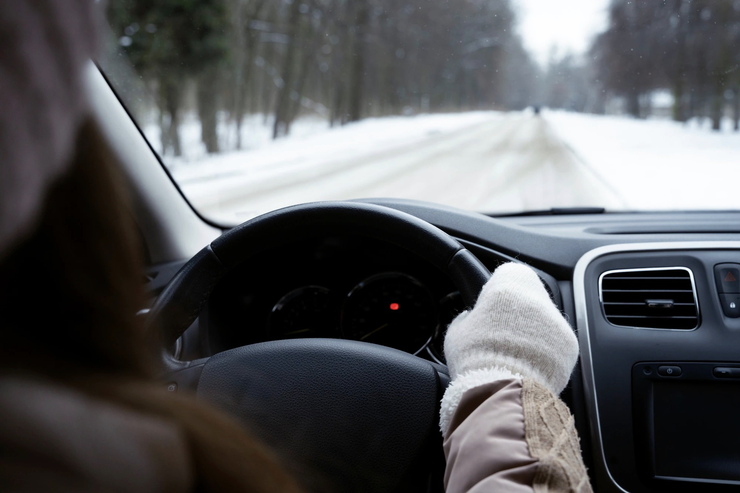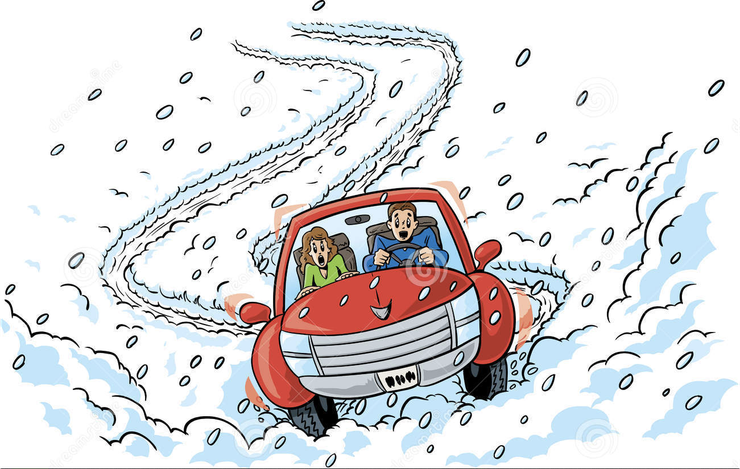How bad is a car skid and how to deal with it
- November 21, 2022
- 0
If, as a rule, skidding in summer is the fate of the elite, then in winter it becomes an almost massive phenomenon, regardless of the type of drive
If, as a rule, skidding in summer is the fate of the elite, then in winter it becomes an almost massive phenomenon, regardless of the type of drive

Recall that skidding is a situation when the sliding rear wheels try to catch up with the front wheels, as a result of which the car body begins to change position on the road. For the average driver, this situation is almost always stressful and can lead to inappropriate actions. Hence the high number of accidents at the beginning of winter. Why does drift occur?
Everything is simple here. When driving a rear-wheel drive car, excessive pressure on the accelerator pedal, even at the minimum angle of rotation of the front wheels, can cause the rear wheels to slip as they actively slide out of the turn. When driving in front-wheel drive, the driver may encounter the same problem if he abruptly releases the gas at the start of turning the steering wheel. If you have four-wheel drive at your disposal, slippage can occur from both too much and too little throttle, depending on the pace and amplitude of the steering wheel.
But the lower the coefficient of friction, the more likely you are to encounter this problem. And how dangerous is skidding? It puts the car in the so-called extra control mode. In other words, the car begins to change direction too actively, scaring the “steersman”. But the main thing is that the car still remains controlled. You just need to understand how to act.
And here we will not talk about sporty driving techniques, because for an ordinary person, safety and control over the situation are important first of all. Of course, modern cars have active safety assistants. The paradox, however, is that the slippery it gets under the wheels, the less efficiently they work. After all, they only have to deal with small contact surfaces between the wheels and the slippery road. Why?
Yes, because they can only redistribute or slow down the torque vector between the axles and wheels. But it is in winter, on ice, that we are faced with a minimum coefficient of adhesion, and electronic assistants simply do not have the opportunity to effectively influence the situation. So in winter the driver is still master of his own destiny. If we respond to a slip, we must first remove the cause.
With rear-wheel drive, this is again excess gas. So it should be reduced. And at the same time turn the steering wheel in the slip direction. As the car stabilizes, smoothly return the steering wheel to the “straight” position.
In front-wheel drive, when a slip occurs, we need to add gas until slip and steer the steering wheel in the direction of the desired direction of movement. And after the stabilization of the car, the steering wheel comes to the “straight” position, but the gas smoothly decreases to the level of working speed.
For 4WD we need to give it a little throttle and turn the rudder in the direction of the skid with its gentle return to the straight position. However, without special training, it is quite difficult to use these tips.
Therefore, “AutoVzglyad” recommends, in case of uncertainty in one’s skill, in the event of a skid, to brake with synchronous steering in the desired direction. This way you can slow down and stabilize the car.


Recall that skidding is a situation when the sliding rear wheels try to catch up with the front wheels, as a result of which the car body begins to change position on the road. For the average driver, this situation is almost always stressful and can lead to inappropriate actions. Hence the high number of accidents at the beginning of winter. Why does drift occur?
Everything is simple here. When driving a rear-wheel drive car, excessive pressure on the accelerator pedal, even at the minimum angle of rotation of the front wheels, can cause the rear wheels to slip as they actively slide out of the turn. When driving in front-wheel drive, the driver may encounter the same problem if he abruptly releases the gas at the start of turning the steering wheel. If you have four-wheel drive at your disposal, slippage can occur from both too much and too little throttle, depending on the pace and amplitude of the steering wheel.
But the lower the coefficient of friction, the more likely you are to encounter this problem. And how dangerous is skidding? It puts the car in the so-called extra control mode. In other words, the car begins to change direction too actively, scaring the “steersman”. But the main thing is that the car still remains controlled. You just need to understand how to act.
And here we will not talk about sporty driving techniques, because for an ordinary person, safety and control over the situation are important first of all. Of course, modern cars have active safety assistants. The paradox, however, is that the slippery it gets under the wheels, the less efficiently they work. After all, they only have to deal with small contact surfaces between the wheels and the slippery road. Why?
Yes, because they can only redistribute or slow down the torque vector between the axles and wheels. But it is in winter, on ice, that we are faced with a minimum coefficient of adhesion, and electronic assistants simply do not have the opportunity to effectively influence the situation. So in winter the driver is still master of his own destiny. If we respond to a slip, we must first remove the cause.
With rear-wheel drive, this is again excess gas. So it should be reduced. And at the same time turn the steering wheel in the slip direction. As the car stabilizes, smoothly return the steering wheel to the “straight” position.
In front-wheel drive, when a slip occurs, we need to add gas until slip and steer the steering wheel in the direction of the desired direction of movement. And after the stabilization of the car, the steering wheel comes to the “straight” position, but the gas smoothly decreases to the level of working speed.
For 4WD we need to give it a little throttle and turn the rudder in the direction of the skid with its gentle return to the straight position. However, without special training, it is quite difficult to use these tips.
Therefore, “AutoVzglyad” recommends, in case of uncertainty in one’s skill, in the event of a skid, to brake with synchronous steering in the desired direction. This way you can slow down and stabilize the car.
Source: Avto Vzglyad
Donald Salinas is an experienced automobile journalist and writer for Div Bracket. He brings his readers the latest news and developments from the world of automobiles, offering a unique and knowledgeable perspective on the latest trends and innovations in the automotive industry.